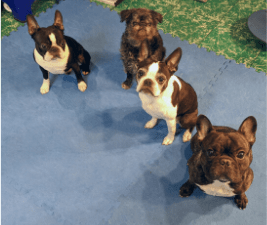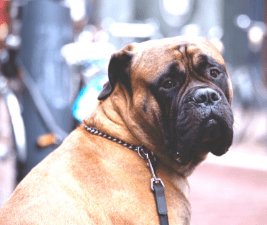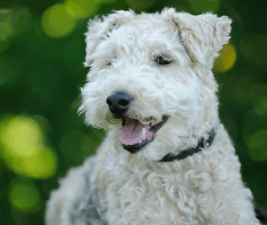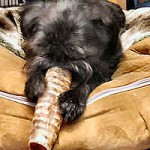Small dogs are troublemakers.
They can’t help it. It’s in their nature to explore every nook and cranny of their world. And, because of their size, they can fit into the smallest spaces. Especially the ones we can’t reach.
They’re at their curious worst when they’re puppies. They’re even tinier and can fit into even smaller spots. Keeping track of Boston Terrier puppy is like being on a perpetual carnival ride. Both of you are in constant motion when the puppy’s awake. Fortunately, puppies nap a lot. And when they do, every bit of waking aggravation is eclipsed by their cuteness.
Chaos is their job
A blanket statement like “small dogs are troublemakers” is just begging for contradiction. And, anecdotally, we know there are some incredibly angelic little dogs out there. We’ve just never met one. And we’ve encountered a multitude in our time.
It makes sense, when you consider their background. The vast majority of small dog breeds were developed as vermin-hunters. They have the size they do to fit into rats’ nests and vermin holes. Many people are surprised to find out that the elegant-looking Yorkshire Terrier breed was developed in the fabric mills of Yorkshire to rid the factories of rats. They look like fairy pets. They’re fierce like the dickens.
Where did this come from?
Small vermin-hunting dog breeds are also designed to work independently of people. Unlike most hunting and sporting dogs, little dogs “do their thing,” without any direction from their owners. The low-slung Dachshund are solo hunters, with badgers and other tunneling animals their primary prey.
One possible exception may be the Toy Poodle. All Poodles are water retrievers, bringing back game brought down over water. Small dogs are not, by any stretch of the imagination, frou-frou, do-nothing creatures.
Which brings up a whole set of issues for people “downsizing” from bigger dogs. While it’s true that little dogs are easier to carry, you have to get hold of them first. Anyone who’s ever tried to coerce a little dog into staying where it doesn’t want to be (like the bathtub), knows the feeling. If you don’t know the taste of dog shampoo, you’ve never had a little dog.
Problem solvers
These independent little hunters had to figure out, on their own, how to get to their prey. In modern times, this leads to all kinds of trouble, from figuring out how to open crate doors, to cabinets (where the snacks are), to climbing onto furniture (tables, kitchen counters). They can get under, and over, and into just about anything their creative minds desire. Which is why small dogs are troublemakers.
One of the best ways to make sure your dog stays out of mischief is to keep his brain engaged. If she’s trying to solve puzzles you’ve created, she’s not making up her own. One of our favorite games is “find it,” or a version of hide and seek. Deliberately place some treats around the house, in accessible but not obvious places. Small plastic leftover containers to keep the treats from getting too lost.
A tired dog is a good dog
Your dog will love “finding” the treats. Even more than if you handed them to her. Dogs do feel a sense of accomplishment. Achieving a goal, using their natural abilities, and engaging their brains makes a good day for any little dog. And you’ll both have fun, too.
If your “find it” game whets your appetite for more, please check out our dog-training site: 2-Minute-Trainer.com You’ll find all kinds of training games to play with your dog, and new tips every week for more fun with your little troublemaker.














